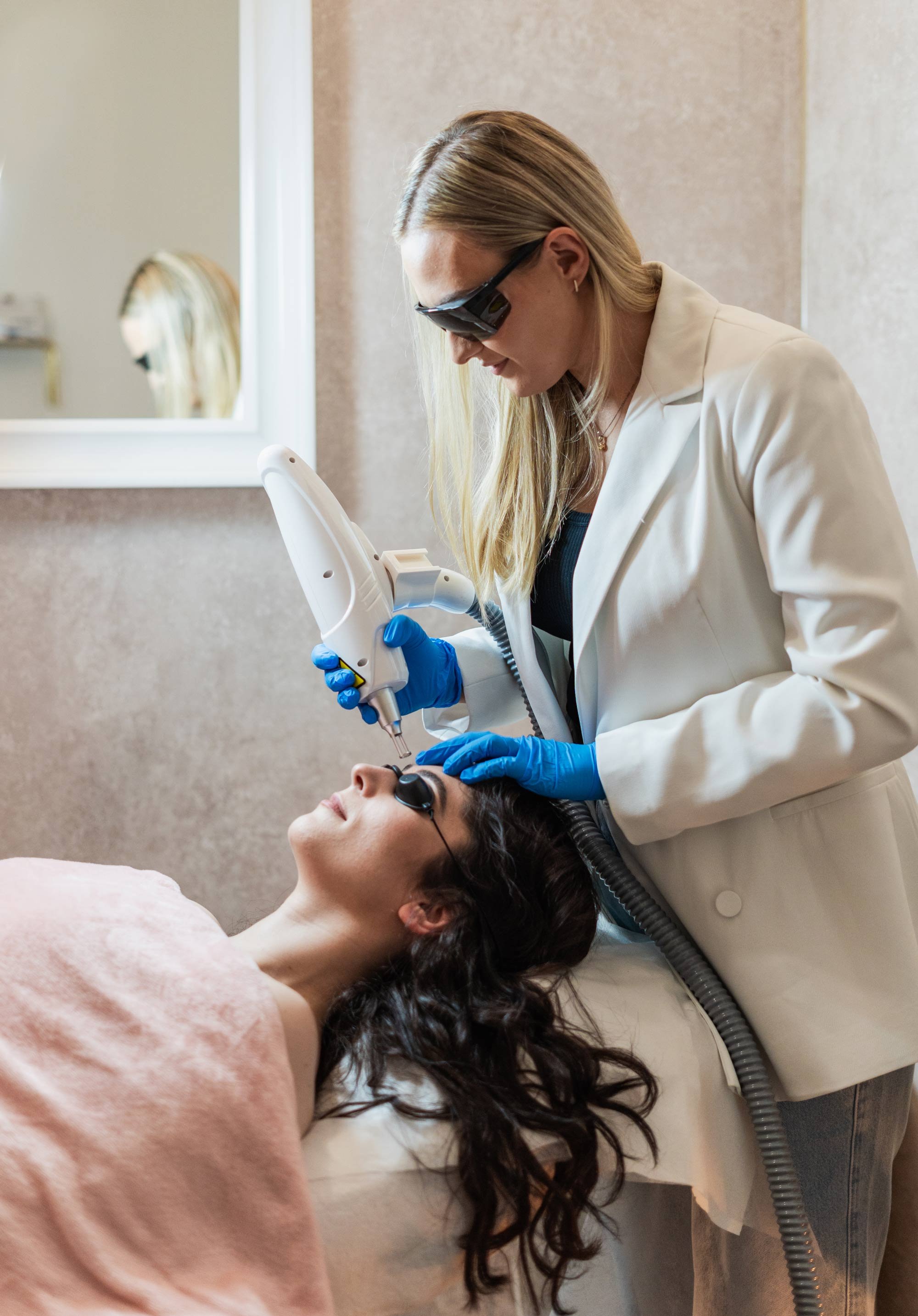
PMU&Tattoo RemovAL
-
In the studio, I have two methods of pigment removal. I use the Nd-Yag laser and a remover. I primarily use the laser due to its power and faster results, and I use the remover additionally if needed.
-
The Nd-Yag laser works by emitting high-energy light pulses that are absorbed by the pigment in the skin. This causes the pigment to break down into smaller particles, which are then naturally eliminated by the body's immune system.
-
The procedure can be painful, and you may feel heat in the treated area. Fortunately, the procedure is very quick. For permanent makeup removal, it takes seconds, at most a few minutes. The time for tattoo removal depends on the size of the tattoo. In one session, I can't work on an area larger than the size of an A4 sheet due to the risk of post-procedure complications.
-
It's a very individual matter. It depends on factors such as how long ago the tattoo or PMU was done, what ink was used, and how deeply it was implanted. From experience, I know that for some people, one session may be enough, while for others, even five sessions may not suffice. It also matters whether the person planning to remove the tattoo or PMU intends to do a cover-up or wants it completely removed. To discuss any doubts, I invite you for a consultation.
-
You can perform laser eyebrow and tattoo removal procedures every 4-6 weeks.
-
Typically, it's advisable to wait at least 6 weeks after getting a PMU or a tattoo before starting the removal process. This allows the skin to heal properly and reduces the risk of adverse reactions during the removal procedure.
-
The price for one session is £50-100, however, you can find current prices in our highlighted stories.
-
• Pregnancy
• Active skin infections or conditions (e.g., eczema, psoriasis)
• Recent sun exposure or tanning
• History of keloid scarring
• Certain medications or medical conditions (consultation with a healthcare provider is recommended)
• History of poor wound healing
• Use of photosensitizing medications
• Dark skin types (increased risk of hypo- or hyperpigmentation)
-
Within the first 24 hours after the procedure:
• Apply cold compresses directly to the skin.
• Absolutely avoid bathing in a tub and avoid sauna or swimming pool.
• Upon returning home, gently wash the treated area with water and dry it thoroughly but gently – preferably with a paper towel.
• Handle the treated area with particular care.
• Do not touch or massage the treated area.
• Maintain high hand hygiene, as there is a risk of secondary infection.
• Avoid physical exertion.
• Do not consume alcohol or intoxicants.
• Do not apply makeup or henna to the treated area until the skin is fully healed.
• For the first few days, use Octenisept-type preparations.
For a period of 2 weeks or more:
• Avoid intense physical activity.
• Do not sweat on the treated area.
• Do not use a sauna or jacuzzi for up to 2 weeks do not soak the treated area.
• The treated area should remain clean, dry, and uncovered. If dressing is necessary, it should only be done according to the recommendations of the person performing the procedure.
• Do not use a tanning bed for 3 months.
• Avoid strong sun exposure and use SPF 50 sunscreen.
• Do not undergo chemical and mechanical peeling procedures for a minimum of 4 weeks after the procedure.
• Do not wash the treated area with alcohol-containing products.


